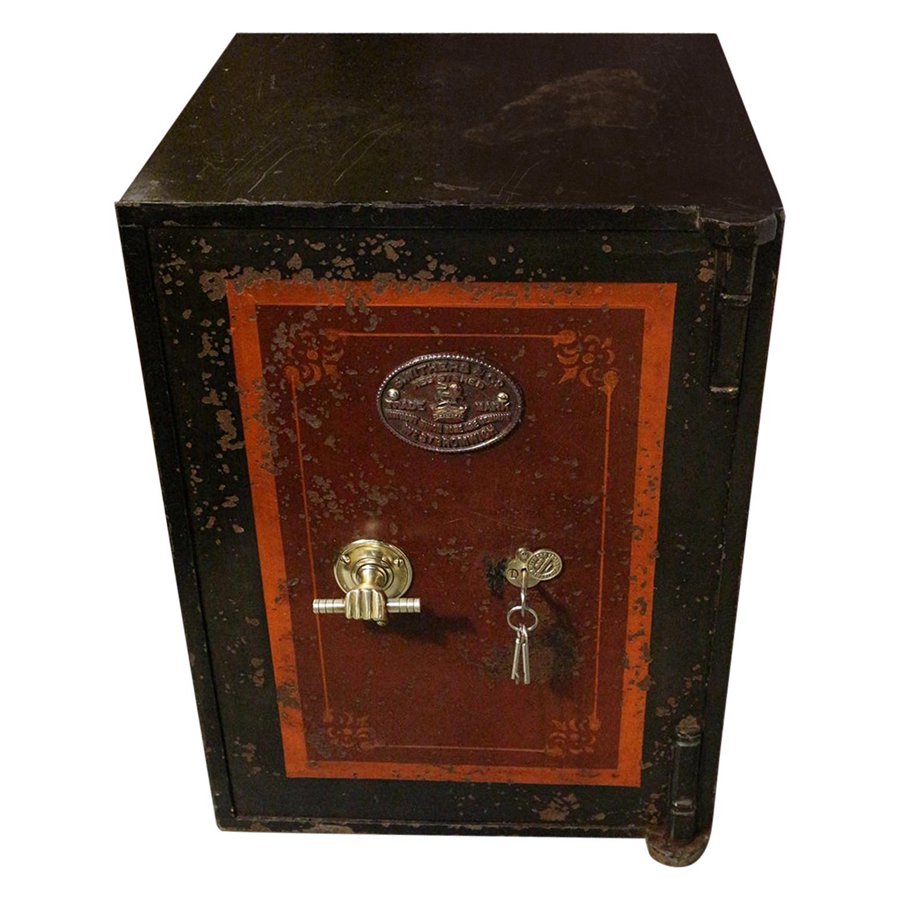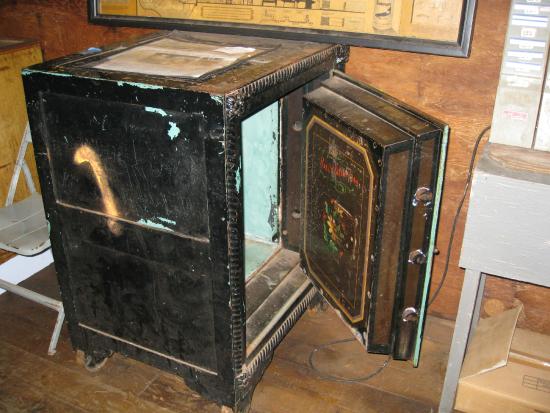Antique safes are a fascinating topic and have been valuable collector’s items for decades. Tracing their history back to ancient civilizations like the Egyptians and Romans, the earliest known safe was discovered in the tomb of Pharaoh Ramesses II from the 13th century B.C. With a locking system resembling the modern pin tumbler lock, these first safes were made from wood. As security features evolved, safes became more sophisticated and intricate in their construction.
Throughout history, various types of safes were developed to cater to different preferences and needs. For example, cannonball safes became famous thanks to their appearances in finance movies, while small, decorative safes were popular choices for people to store their valuables in homes. As you dive into the world of antique safes, you’ll come across a wide variety of styles, designs, and sizes that can impact the value and desirability of these unique collectibles.
To identify and determine the value of an antique safe, it’s essential to consider factors such as the manufacturer, materials used, condition, and rarity. With different types of safes like hobnail safes and cannonball safes adding distinct qualities to a collection, it’s important to familiarize yourself with the various styles and understand their significance in the historical context. By doing so, you’ll be able to better appreciate the intricacies of these special items and make an informed decision when looking to add one to your collection or sell one for the right price.
Table of Contents
History of Antique Safes
American Safes
In the United States, safes weren’t manufactured until the mid-1820s. Before that, all safes were made in Europe and imported. Early American rectangular bank safes were often made with double walls that were filled with various materials, such as soft steel rods running both vertically and horizontally.
One notable manufacturer was Mosler Safe, a company known for its strong and secure safes. Mosler’s Hercules Cannonball Safe, produced in the late 19th century, was renowned for its resistance to burglary attempts. In addition, the Herring Hall Marvin Safe Co. manufactured a wide range of safes, including home safes, vault doors, and time locks, with a reputation for quality and innovation.
English Safes
English safes were crafted to protect personal valuables from fire and theft. Merchants in the 15th century developed the treasure chest of pirate story fame, made of oak and banded with iron. After 1830, iron “safes” were introduced with inner walls made of materials like stone, plaster, wood, cement, brick, asbestos, mica, alum, chalk, clay, or dead air spaces.
It is important to differentiate between American and English safes when assessing their history, value, and construction materials. English safes typically have their manufacturers’ names and dates more prominently displayed, whereas American safes may rely more on elaborate pin striping or decals.
Some popular English safe manufacturers include Chubb, Milner, and Tann. These companies were known for their craftsmanship, innovation, and security features, like hidden keyholes and intricate, decorative details.
Keep in mind that the antique safe market varies based on factors such as rarity, condition, and historical significance. Examining the materials, craftsmanship, and manufacturer’s markings will aid in identifying and valuing a specific antique safe.
Types of Antique Safes
Cannonball Safes

Cannonball safes are large, round, and heavy, weighing over 5000 pounds. Due to their size, they don’t fit well in small stores but are often featured in finance movies. Their locks and handles are incredibly strong, adding to their value. You can expect a cannonball safe to be valued between $2,000 to $3,000.
Cabinet Safes
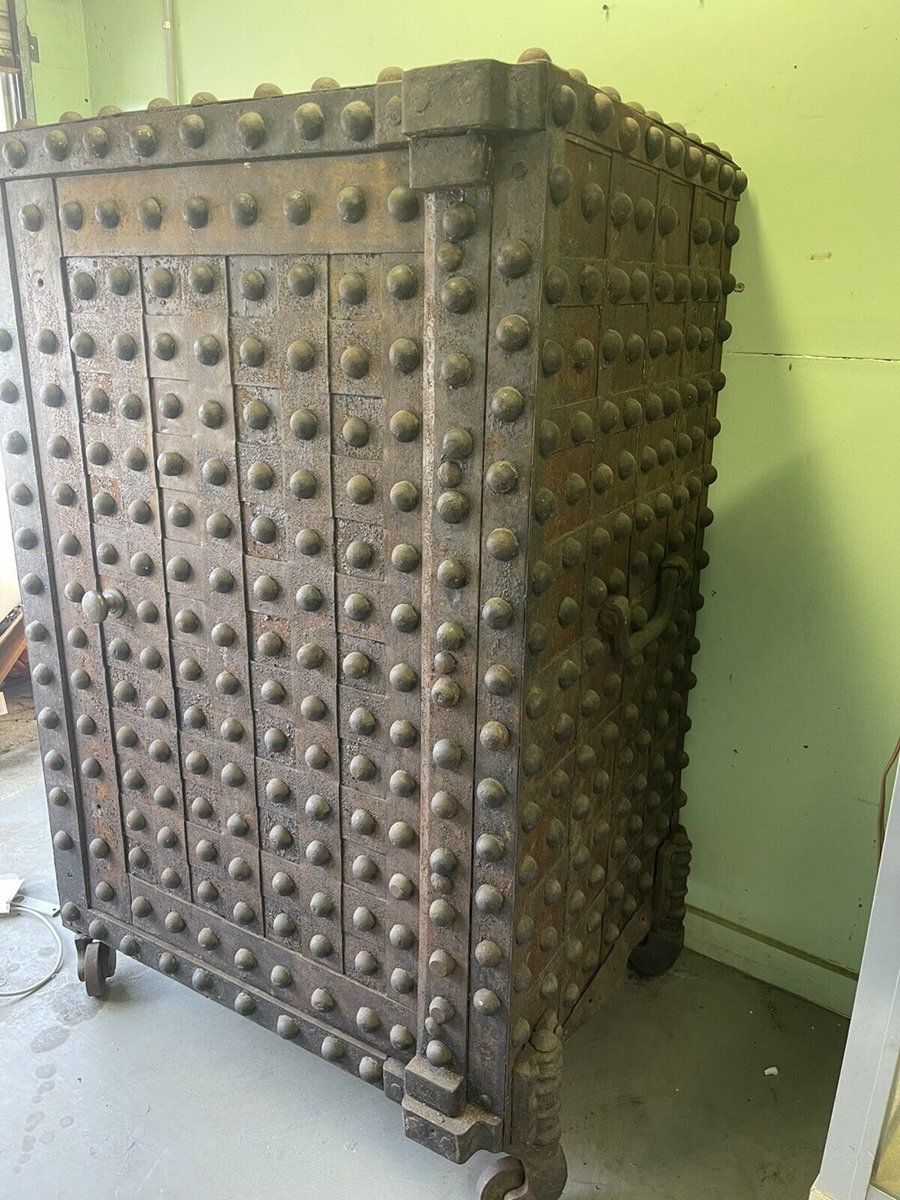
Cabinet safes have a more traditional, rectangular shape and offer a variety of internal compartment configurations for storing valuables. Their size and design make them easy to incorporate into various home settings. Values for cabinet safes can vary widely, but you might anticipate a range of $500 to $2,000 depending on factors like age, condition, and style.
Victorian Parlor Safes
Victorian parlor safes are elegantly designed safes intended for two purposes: protecting valuables and serving as a decorative piece of furniture. You will find these safes in various styles, such as:
- Boudoir safes
- Jewelry safes
- Brothel safes
- Tabletop parlor safes
Victorian parlor safes can range in value from $1,000 to $5,000, depending on their style, rarity, and condition.
Cast Iron Safes

Cast iron safes were popular in the 19th and early 20th centuries due to their durability and resistance to fire damage. These safes often feature ornate designs and can be quite heavy. Depending on age, size, and level of detail, cast iron safes can be valued from $500 to $2,500.
Hobnail Safes
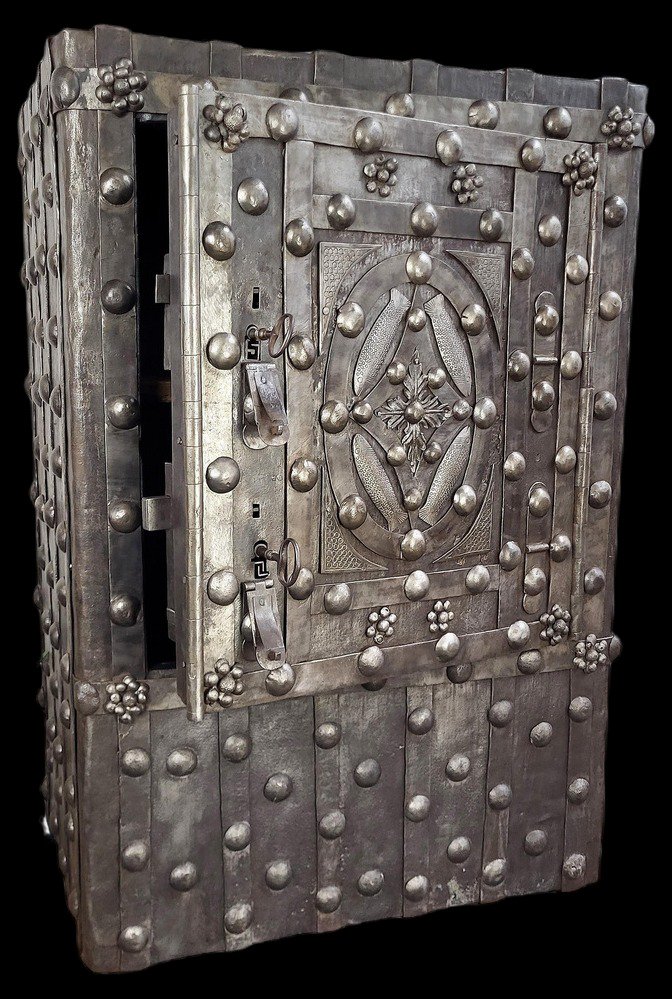
Hobnail safes, also known as knob chests, originated in the early 1800s. These safes are characterized by their exterior steel covering and distinctive oversized nail heads that provide additional security. Manufacturers would sometimes soak the underlying wooden components in saltwater to improve fire resistance. Hobnail safes can range in value from $1,000 to $4,000, depending on their condition and age.
Small Antique Safes

Small antique safes come in various shapes and styles, including portable safes for travelers, jewelry boxes, and compact safes specifically designed for residential use. These smaller, more versatile safes can range in value from $300 to $1,500, depending on factors like age, rarity, and design.
Identification and Marks
When it comes to identifying antique safes, there are several factors to consider. By examining the age, marks, and overall style, you can determine the value of your antique safe. In this section, we will discuss some key points to help you identify and value your precious antique safe.
Age and Date
One of the primary aspects to consider when identifying an antique safe is its age. The older the safe, the more valuable it may be. Look for any markings or dates that may indicate when the safe was manufactured. Handmade safes from the 1750s may be more unique, while safes from the 1800s might have a sturdier, composite construction. Safes from the 1900s may be more functional and lightweight.
Marks and Signatures
Marks and signatures are often crucial in identifying the maker of the antique safe. Look for any symbols, initials, or hallmarks that may indicate the manufacturer. It’s common to find marks in obscure spots or very small areas. These marks can help you identify the maker and, consequently, the value of your antique safe.
Materials and Design
Examine the materials and design of the safe, as they may provide clues to its age and value. For example, safes made with asbestos were first introduced in the mid-1830s by John Scott. Wooden components soaked in salt water were used in the early 1800s to improve fire resistance in steel-covered hobnail safes.
Valuation Range
Given the various factors influencing the value of antique safes, it’s important to consider the range of possible valuations:
- Boudoir safes: $500 to $5,000
- Jewelry safes: $1,000 to $10,000
- Brothel safes: $500 to $3,000
- Tabletop parlor safes: $750 to $7,500
Keep in mind these valuations are just rough estimates, and the actual value of your antique safe may vary depending on its age, condition, and rarity. With diligent research and careful attention to detail, you’ll be well-equipped to identify and value your antique safe.
Period and Style
As you delve into the world of antique safes, it’s crucial to understand the different periods and styles of these fascinating antiques. By doing so, you will be in a better position to identify and appraise the safes accurately.
Cannonball Safes

These spherical safes often appear in finance movies and date back to the late 19th and early 20th centuries. Valuation for these safes can range from $1,000 to over $10,000, depending on factors such as rarity and condition.
Fire Safes
Fire safes were designed to protect valuable documents and belongings from fire damage. Dating back to the mid-19th century, these safes typically have a two-layer iron body with insulation material in between. Prices for antique fire safes vary widely, ranging from $250 to $5,000 or more.
Double-Door Safes

These larger safes feature two doors and were popular in banks, offices, and hotels during the latter half of the 19th century. Valuations for double-door safes can range from $750 to over $20,000, depending on factors like size, condition, and provenance.
Iron Floor Safes
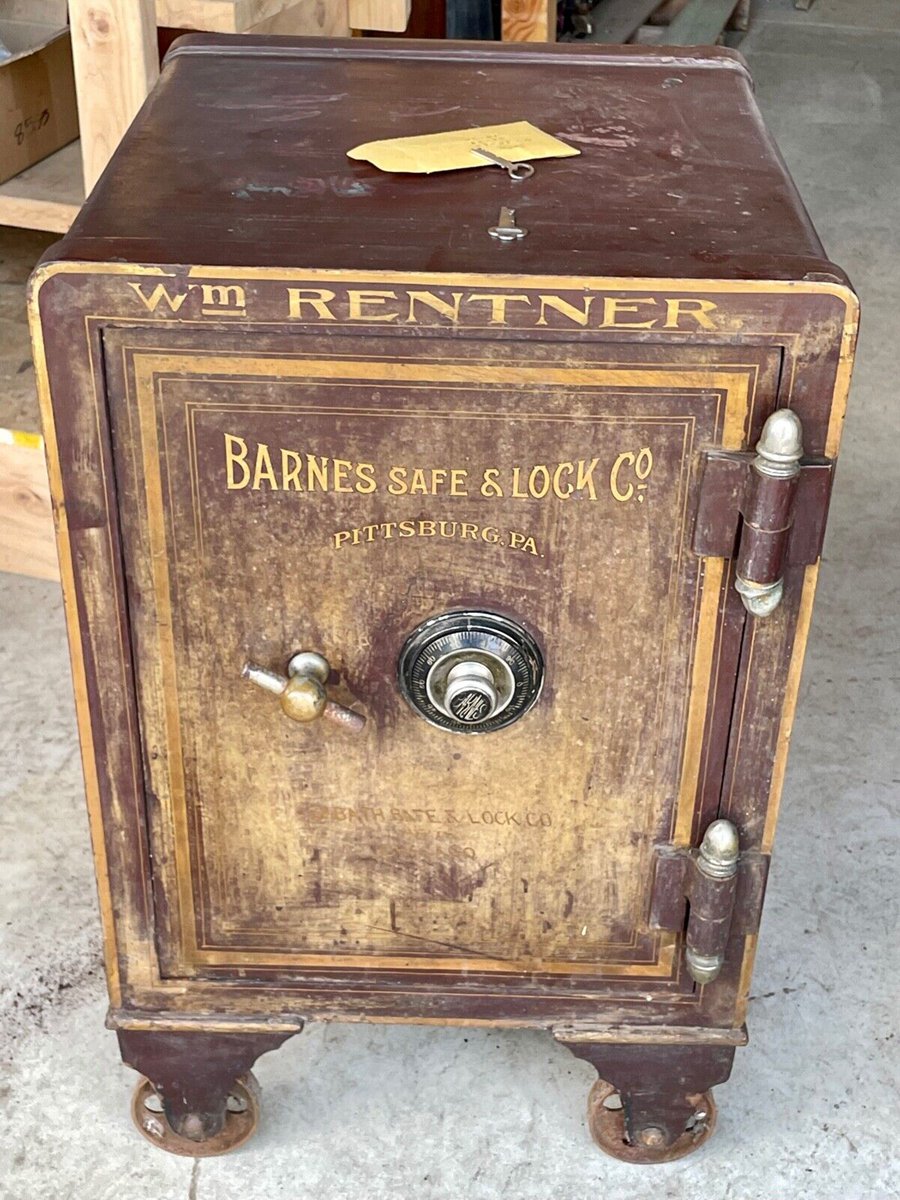
Created as early as the 17th century for installation in the floor of a business or residence, iron floor safes had their peak of popularity during the 18th and 19th centuries. The value of these rare safes can range anywhere from $1,500 to $50,000 or more.
Wall Safes
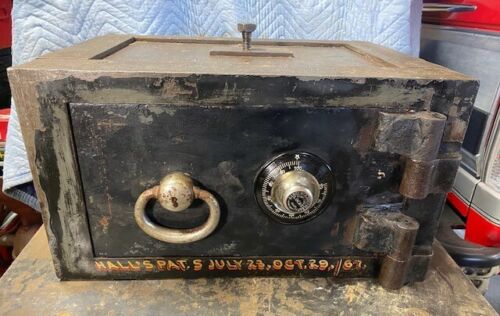
Designed to be concealed within walls for extra security, antique wall safes have been around since the early 19th century. Their valuation ranges from $500 to $10,000, based on rarity, material and overall condition.
Pie Safes
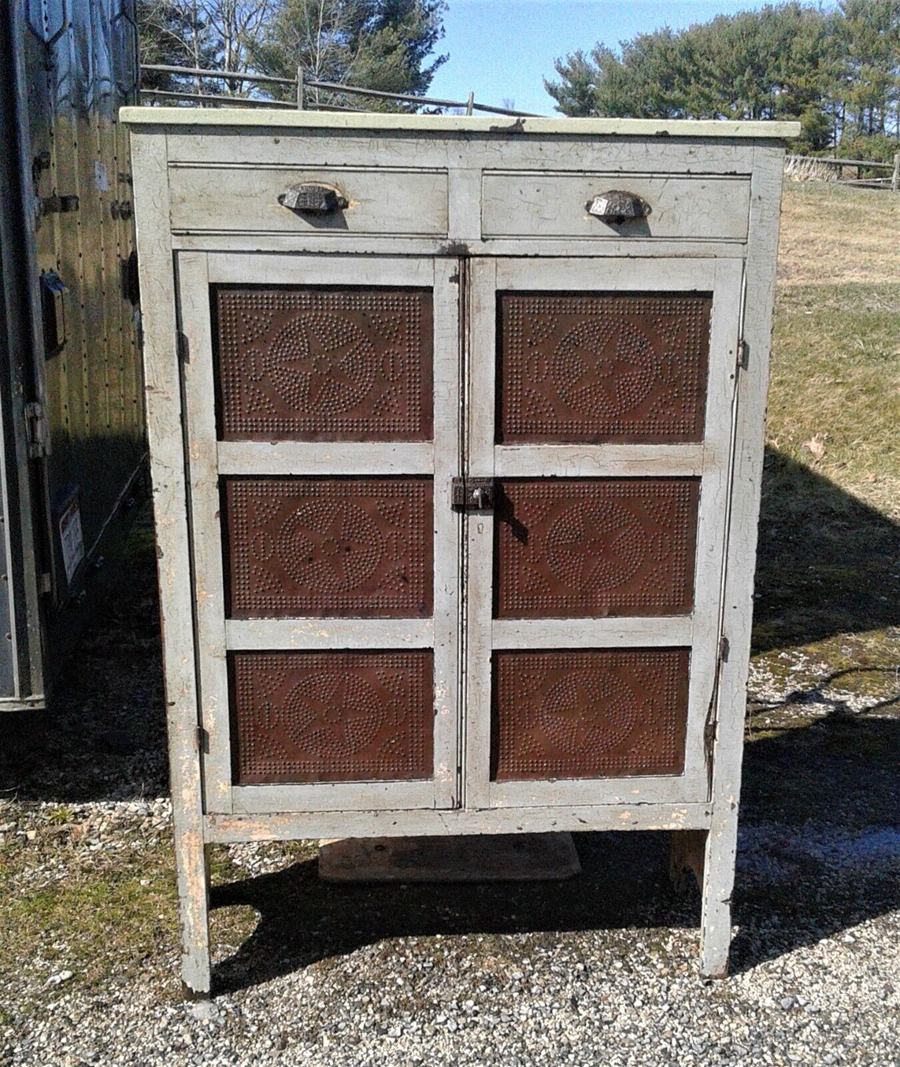
Pie safes, dating back to the 18th and 19th centuries, were typically wooden cabinets used to store food, especially pies, to protect them from insects and rodents. While not traditional safes, they are considered valuable and collectible antiques. Depending on the age, size, and condition, pie safes can fetch between $500 and $5,000.
As you explore the various periods and styles of antique safes, remember that factors like the safe’s type, condition, and rarity all play a significant role in determining its value. By familiarizing yourself with these characteristics, you’ll ensure you know how to accurately identify and value the unique antique safes that you may come across in your own searching.
Manufacturers and Companies
Throughout the history of antique safes, there have been several prominent manufacturers and companies worth mentioning. The most popular among them include Mosler Safe Co., Herring Hall Marvin Safe Co., and Victor Safe & Lock Co. Also, there are notable European safe makers such as Magaud de Chaffaut and Schwab Safe Co. In this section, we will briefly discuss these companies and their contributions to the world of antique safes.
Mosler Safe Co.
Mosler Safe Co. was a significant American manufacturer of safes and bank vaults. Founded in 1867, they produced some of the most secure and reliable safes of their time. Their safes were known for their exceptional craftsmanship and durability. Today, a Mosler antique safe can be valued anywhere between $500 and $10,000, depending on its condition, size, and rarity.
Herring Hall Marvin Safe Co.
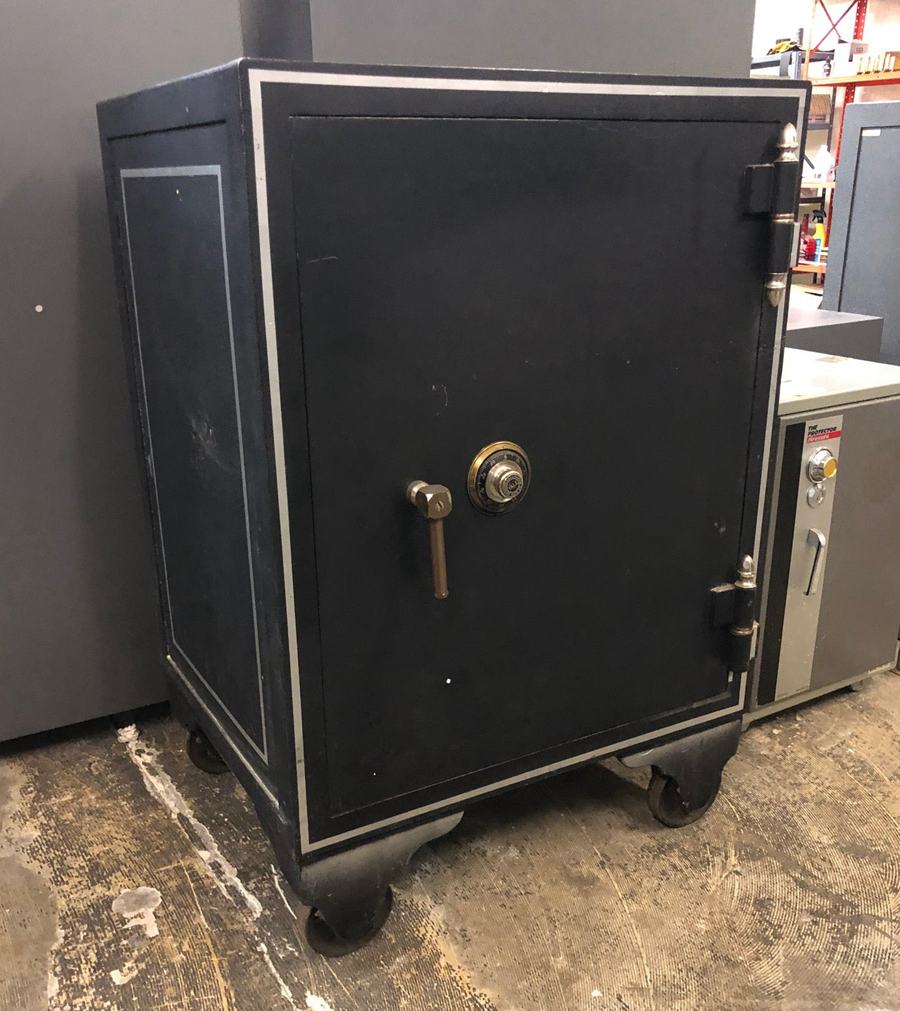
Another influential American safe manufacturer was Herring Hall Marvin Safe Co. They were established in 1892 through the merger of three existing safe companies: Herring & Co., Hall’s Safe & Lock Company, and Marvin Safe Company. Known for their innovative designs and high-quality materials, they produced a wide range of safes for businesses and homes. Depending on the model and condition, a Herring Hall Marvin antique safe’s value can range from $500 to $5,000.
Victor Safe & Lock Co.
Victor Safe & Lock Co. was founded in 1885 and quickly became one of the leading safe manufacturers in the United States. Known for their decorative and intricate designs, they produced safes for both homes and businesses. Today, a well-preserved Victor antique safe can be valued between $400 and $8,000 based on its condition, design, and rarity.
Magaud de Chaffaut and European Manufacturers
European safe makers, such as Magaud de Chaffaut, were known for their intricate and artistic designs. They crafted safes from high-quality materials, often featuring unique locks and decorative elements. European antique safes can vary significantly in value, with some fetching as much as $25,000 or more, depending on their rarity and the quality of their craftsmanship.
When identifying and valuing your antique safe, it’s essential to consider factors such as the manufacturer, age, condition, and design. By familiarizing yourself with famous companies like Mosler Safe Co., Herring Hall Marvin Safe Co., and Victor Safe & Lock Co., you can better understand the history and value of your antique safe.
Locks and Safe Technology
Throughout history, antique safes have utilized various types of locks and technology to protect valuable items. This section will explore several of these methods, including combination locks, biometric locks, and knob-chests.
Combination Locks
Antique safes with combination locks were a popular choice in the 1800s and 1900s. These locks required a specific sequence of numbers to be dialed in order to access the contents of the safe. As a result, safes with combination locks provided a high level of security without the need for a physical key. Valuation for safes with combination locks can range from a few hundred dollars to a few thousand, depending on factors such as age, condition, and rarity.
Biometric Locks
While biometric locks are more commonly associated with modern safes, some antique safes incorporated rudimentary forms of biometric technology for added security measures. Though not as advanced as today’s biometric locks, these early systems may have utilized fingerprints or signatures to grant access to the safe contents. Due to the rarity and historical significance of antique safes with biometric locks, their valuation can range from a couple of thousand dollars to several thousand dollars, depending on factors such as condition and uniqueness.
Knob-Chest
In the early 19th century, knob-chest or hobnail safes were a common type of antique safe. These safes were constructed with wooden boxes covered with iron sheeting and secured with cast-iron nails, resulting in their characteristic hobnail appearance. Manufacturers of knob-chest safes included Jesse Delano, C. J. Gayler, and Magaud de Charf.
Knob-chest safes were primarily intended for fire resistance, with some models incorporating soaked wooden components in saltwater to improve their fireproofing capabilities. The valuation of knob-chest safes can vary, with some examples ranging from a few hundred dollars for more common models to a few thousand dollars for rarer or highly collectible safes.
When determining the value of an antique safe, you should consider factors such as age, condition, rarity, and the type of lock used. By understanding the history and technologies of locks and safes, you can better appreciate and evaluate your antique safe collection.
Value and Collectibility
When it comes to valuing antique safes, several factors influence their worth. As a collector, you should consider factors such as the age, rarity, historical significance, material, and condition of the safe.
To determine the value of an antique safe, understanding its history and origin can prove helpful. For instance, American and English safes differ in their history, features, and sometimes materials used. American safes often used steel, whereas English safes utilized cast iron for construction.
As you assess the value of a given antique safe, you should also consider its collectibility. Collectors often look for specific features or attributes that make an antique desirable, such as intricate designs, unique lock mechanisms, or a prestigious manufacturer’s name. In some cases, the inclusion of silver or other precious metals may elevate an antique safe’s value further.
To help you gauge the value range for different antique safes, below are some examples with their estimated worth:
- Italian Iron Floor Safe: $124,500
- Belgian Iron Floor Safe: $48,500
- BAUM Safe & Lock Co. Black Iron Safe: $100 – $200
- Pennsylvania Hanging Pie Safe in Green Paint, ca. 1850-1880: $4,900
- Large Napoleon III Steel Safe: $8,900
Keep in mind that these values can vary based on various factors, such as the demand in the market and the overall condition of the antique safe. It’s always a good idea to consult a professional appraiser or reference price guides to obtain the most accurate valuation for your antique safe.
Dating and Authenticating Antique Safes
Dating an antique safe can be a challenging task, but with careful research, you can determine its age and authenticity.
Start by examining the safe’s construction and design. Early safes, made in the late 1820s, were wooden chests covered with sheet iron, secured with large-headed cast iron nails. This style is known as the hobnail safe, and popular manufacturers included Jesse Delano, C. J. Gayler, and Magaud de Charf.
To authenticate and identify an antique safe, look for the manufacturer’s name and logo. Common safe manufacturers include Diebold, Mosler, Hall, and Herring-Hall-Marvin. The manufacturer’s label or engraving often contains valuable information, such as serial numbers, model names, or patents. Use this information to pinpoint the safe’s age and origin further.
For example, Diebold Safe & Lock Co. can trace its history back to the 1860s, while Mosler Safe Company was founded in the late 1860s. Researching the history of the manufacturer can help you identify when your specific safe was produced.
To find the value of your antique safe, consider factors such as:
- Type and rarity
- Manufacturer
- Age
- Condition
- Historical significance
By researching the safe’s specifics and consulting antique appraisal guides, you can better understand its history, authenticity, and value. Remember, the more precise and accurate your research, the more confident you can be in appreciating and preserving your antique safe.
Fireproofing and Asbestos
When it comes to antique safes, fireproofing was of significant importance. Many antique safes were designed with additional fireproofing features to keep their contents safe from heat and fire damage. One of the key fireproofing materials commonly used in antique safes was asbestos.
Asbestos was a popular choice for fireproofing due to its natural heat resistance properties. It is a fibrous mineral found in rocks and soil, and its heat resistance and durability made it a favorable option for fireproof safes. Back in the 19th century, innovators like John Scott secured a patent for using asbestos in fireproof safes. Issued in 1834, the patent showed the potential of this material for a variety of applications.
When looking at antique safes, you may encounter models that have an asbestos lining on the interior as a fireproofing material. A few popular manufacturers who made use of asbestos include:
- John Scott Safe Co.: Known for their short operation between 1834 and 1835, their safes are rare and highly sought after
- Diebold Safe & Lock Company: An established manufacturer of safes, some of their older models feature asbestos for fireproofing
It’s important to note that modern understanding of asbestos has revealed its adverse health effects, so handling these antique safes with asbestos should be done with caution. While asbestos-containing safes can still have substantial value, make sure to take necessary precautions when handling or refurbishing them.
As you explore different types of antique safes with fireproofing, remember that asbestos was a commonly utilized material and may affect the value and safety of your antique safe.
Final Thoughts
Antique safes can be a valuable addition to your collection or a unique item in your home. With a rich history dating back to Ancient Egypt, these functional pieces of art have evolved over time to include various types, styles, and levels of security.
When identifying an antique safe, pay close attention to the design, materials used, and possible manufacturer markings. Keep in mind that older safes often have unique insulations like stone, chalk, or mica, which can be crucial for identification. Some popular antique safe manufacturers include Diebold and F. Schmidt Hamburg.
Determining the value of an antique safe can be challenging, as it depends on factors such as height, rarity, and condition. If your safe is 8-10 inches high, you can expect a value of $1,000 – $1,200, while safes that are 12-15 inches tall may be worth $500 – $900. Safes taller than 15 inches might see a decrease in value of 1% for every additional inch. Keep in mind that scarcity and other factors could influence these values.
To ensure your antique safe maintains its value and stays in the best possible condition, practice proper care and maintenance. This includes keeping it in a temperature-controlled environment, avoiding harsh chemicals, and having it professionally serviced if needed. By following these guidelines, you can preserve the beauty and functionality of your antique safe for years to come.
FAQ
Q: How do I determine the age of my antique safe?
A: To identify the age of your antique safe, look for any manufacturer markings, dates, or serial numbers on the safe. Safes from the 1750s are typically unique and handmade, while those from the 1800s tend to be sturdier and made of composite materials. Functional and lightweight safes are often from the 1900s.
Q: What are some popular types of antique safes?
A: There are several types of antique safes that vary in style and design:
- Victorian parlor safes
- Antique safes with asbestos
- Hobnail safes
- Cannonball safes
- Classic cast iron safes
- Cabinet safes
- Data (fire) safes
Q: Are there any notable antique safe manufacturers?
A: Some well-known antique safe manufacturers include Diebold, F. Schmidt Hamburg, and Chubb. These manufacturers have a long history of producing high-quality, secure safes.
Q: How do I determine the value of my antique safe?
A: The value of an antique safe depends on several factors, such as age, rarity, condition, and design. Look for any unique features, intricate details, or historical significance that may increase its value. You can also research similar safes that have been sold to get a better idea of its potential worth.
Q: How can I tell if my antique safe is still functional or secure?
A: Test the safe’s locking mechanism by turning the dial, inserting the key, or entering the combination if available. If it operates smoothly and securely locks, your safe may still be functional. However, keep in mind that antique safes may not offer the same level of security as modern safes. Consult a professional locksmith for advice on maintaining or improving the safe’s functionality.
Remember to thoroughly research and examine your antique safe to ensure accuracy in identification and valuation.


